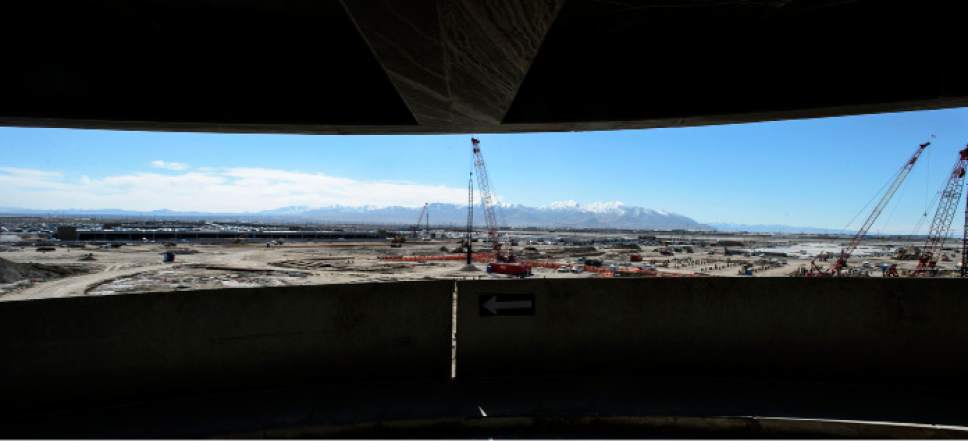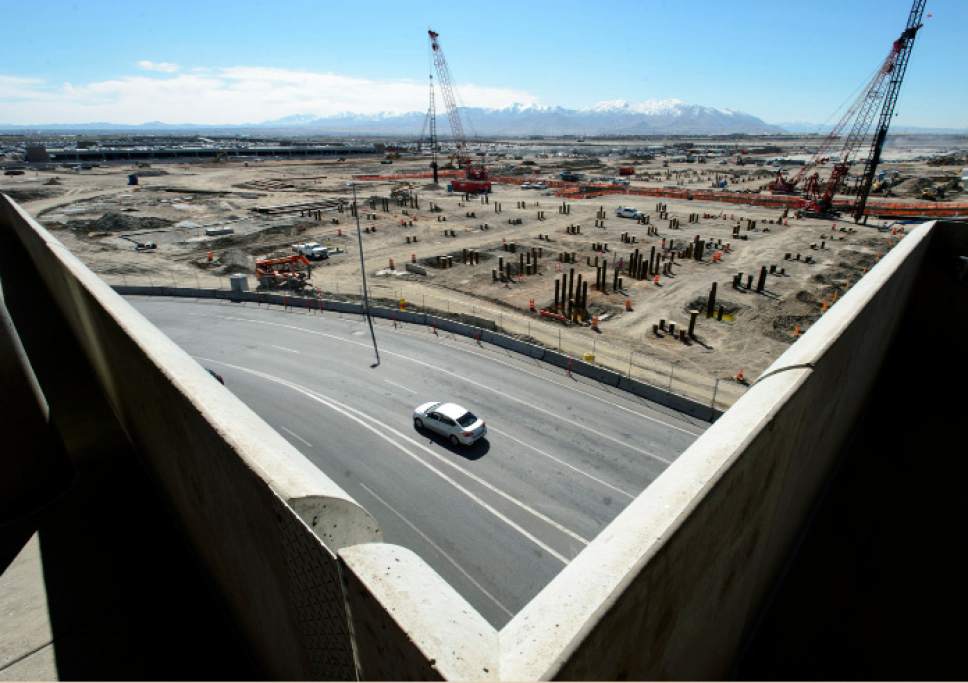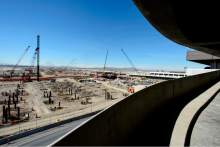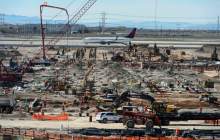This is an archived article that was published on sltrib.com in 2017, and information in the article may be outdated. It is provided only for personal research purposes and may not be reprinted.
The massive $2.9 billion project to rebuild Salt Lake City International Airport may handle projected air traffic for as little as five years after completion — until 2025.
That information emerged Wednesday in an exchange at the Airport Advisory Board.
"Will it take care of us for 25 years?" state Sen. Karen Mayne, a board member, wanted to know about the reconstruction project's ability to handle growth.
"It could be five," said Kevin Robins, the interim airport director.
That surprisingly short projected shelf life is due to growing demand for more flights. Robins said that, with the additional gates and flights airlines are now seeking, the airport may need to build all of a planned second, northern concourse.
About 15 extra gates there have been penciled in, and officials may decide in a year or two whether to add them and "keep building. Those 15 gates are sort of a relief valve," said Terminal Redevelopment Project Director Mike Williams.
Robins said, "If we build the entire north concourse, that starts putting enough pressure on the baggage-handling system that we may have to look at actually expanding the terminal to accommodate the additional gates."
With an eye to the far-distant future, Mayne asked if the airport has enough land to build even more than the two now-planned, parallel concourses.
Robins said master plans include a third concourse eventually. The airport also has enough land "that if we needed to, we could add a fourth concourse. It would require us to move a lot of the north support facilities."
Robins said master plans are "trying to address, 'What is the future if we continue the growth we are experiencing now?' "
He added that the airport at present "continues to face the good problem of growing traffic and not enough rooms at the inn to be able to accommodate" it.
Among new service that he said has been announced are Delta flights beginning in December to Maui, Hawaii, and Tampa, Fla. "We did have Maui service before, and it's coming back in December."
He also said United recently started new nonstop service to Newark, N.J. Southwest has added service to Burbank and Sacramento, Calif.
And internationally, KLM later this month will restart nonstop service to Amsterdam.
"All good problems to have," Robins said. "We continue to make contingency plans."
The current $2.9 billion project aims to build a new terminal and two new parallel concourses by 2020, replacing all current terminals and concourses.
The current airport was designed to handle about 10 million passengers a year, and is now seeing more than twice that number.
The airport's proposed 2018 budget, unveiled Wednesday, includes $744 million of planned work that year on the new terminals and concourses.
So far, most construction for the terminal redevelopment project has been underground and largely out of sight. That's about to change.
Construction of foundations and installation of miles of utilities have progressed to the point that structural steel is about to spring skyward.
"We are starting to get out of the ground," Williams reported.
He said structural steel will start to be erected next month at the new south concourse, "so you will really start to see the buildings come up out of the ground."
He added, "Work is going on everywhere on the 135-acre site right now. It's pretty amazing."
Roads around the airport continue to be rerouted as needed for construction.
Williams said construction of a new "park-and-wait" lot has been completed, and traffic will likely be shifted to it in May — when the current park-and-wait lot will be removed for redevelopment work.
The new 2018 budget for the airport, which is subject to approval by the Salt Lake City Council, also proposes to spend $103.9 million on airport operations. It includes a 3 percent increase in wages for airport employees.
About 40 percent of projected operation revenues come from "landside" concessions such as maintaining and fueling aircraft; 38 percent from airline fees; 12 percent from terminal concessions; with the rest from leases, aviation tax, general aviation fees and other sources.











